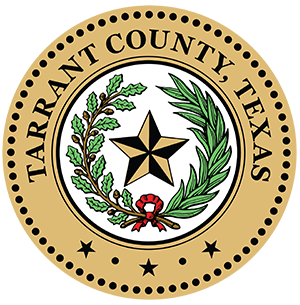Coronavirus (COVID-19)
Coronavirus Disease 2019 commonly called COVID-19 is a respiratory illness that was first reported from Wuhan, China, in late 2019. Since that time the disease has caused multiple large epidemics in every country throughout the world. While the disease is called COVID-19, the virus is called SARS-CoV-2 and is defined by the signs and symptoms of the illness.
The illness has a wide range of reported symptoms that may include fever, chills, headache, cough, sore throat, fatigue, muscle and joint pain, loss of taste or smell, abdominal pain, nausea, vomiting, and diarrhea.
While most people will have mild to moderate illness, some will develop severe illness with persistent high fever, shortness of breath, persistent chest pain or pressure, confusion, or the inability to stay awake.
Severe illness often requires long term hospitalization and can lead to death. Since the first cases were found in Tarrant County in March 2020, the illness has gone on to be the third leading cause of death in the county behind only heart disease and stroke.

Symptoms
There are a wide range of symptoms that can range from mild symptoms to severe illness. Symptoms may appear 2 to 14 days after exposure to the virus. Possible symptoms may include:
- Fever or chills
- Cough
- Shortness of breath or difficulty breathing
- Fatigue
- Muscle or body aches
- Headache
- Loss of taste or smell
- Sore throat
- Congestion or runny nose
- Nausea or vomiting
- Diarrhea
This list does not include all the possible symptoms. Symptoms may change with new COVID-19 variants and can vary depending on vaccination status.

Transmission
COVID-19 spreads when an infected person breathes out droplets and very small particles that contain the virus. These droplets and particles can be breathed in by other people or land on their eyes, noses or mouth. It is also possible that it can contaminate surfaces. If you are infected with COVID-19, you can still spread the virus, even if you do not have any symptoms.

Protect Yourself and Others
There are many ways your actions can help protect you, your household, and your community from severe illness from COVID-19. In addition to basic health and hygiene practices, like handwashing, there are other ways that you can protect yourself and others from getting COVID-19 such as staying up to date with COVID-19 vaccines, staying home if you have suspected or confirmed COVID-19, and avoiding contact with people who have suspected or confirmed COVID-19.
COVID-19 vaccines help your body develop protection from the virus that causes COVID-19. Staying up to date on COVID-19 vaccines significantly lowers the risk of getting very sick, being hospitalized, or dying from COVID-19.
These other tips are also recommended to protect yourself and others from COVID-19 or other respiratory illnesses:
![]() Avoid close contact with people who are sick.
Avoid close contact with people who are sick.
![]() Stay home from work, school and errands when you are sick.
Stay home from work, school and errands when you are sick.
![]() Cover your mouth with a tissue to contain coughing and sneezing --and a mask if you're out and about for your own protection.
Cover your mouth with a tissue to contain coughing and sneezing --and a mask if you're out and about for your own protection.
![]() Wash your hands often with soap and water.
Wash your hands often with soap and water.
![]() Avoid touching your eyes, nose or mouth.
Avoid touching your eyes, nose or mouth.
![]() Clean and disinfect commonly touched surfaces, especially when someone is ill.
Clean and disinfect commonly touched surfaces, especially when someone is ill.

If You Are Sick with COVID-19
If you have COVID-19, you can spread the virus to others. When you are sick with any respiratory virus, you should stay home and away from others.
You can go back to your normal activities when, for at least 24 hours, both are true:
- Your symptoms are getting better overall, and,
- You have not had a fever (and are not using fever-reducing medication).
Keep in mind that you may still be able to spread the virus, even if you are feeling better. When you go back to your normal activities, take added precaution over the next 5 days, such as taking steps for cleaner air, basic hygiene, masking, and physical distancing. If you develop a fever or you start to feel worse after you have gone back to normal activities, stay home and away from others again until, for at least 24 hours, both are true:
- Your symptoms are getting better overall, and,
- You have not had a fever (and are not using fever-reducing medication).
Monitor your symptoms. If you have an emergency warning sign (like trouble breathing, persistent pain or pressure in the chest, new confusion, inability to wake or stay awake, or pale, gray, or blue-colored skin, lips, or nail beds, depending on skin tone), seek emergency medical care immediately.


 TARRANT COUNTY, TX
TARRANT COUNTY, TX

 Public Health
Public Health